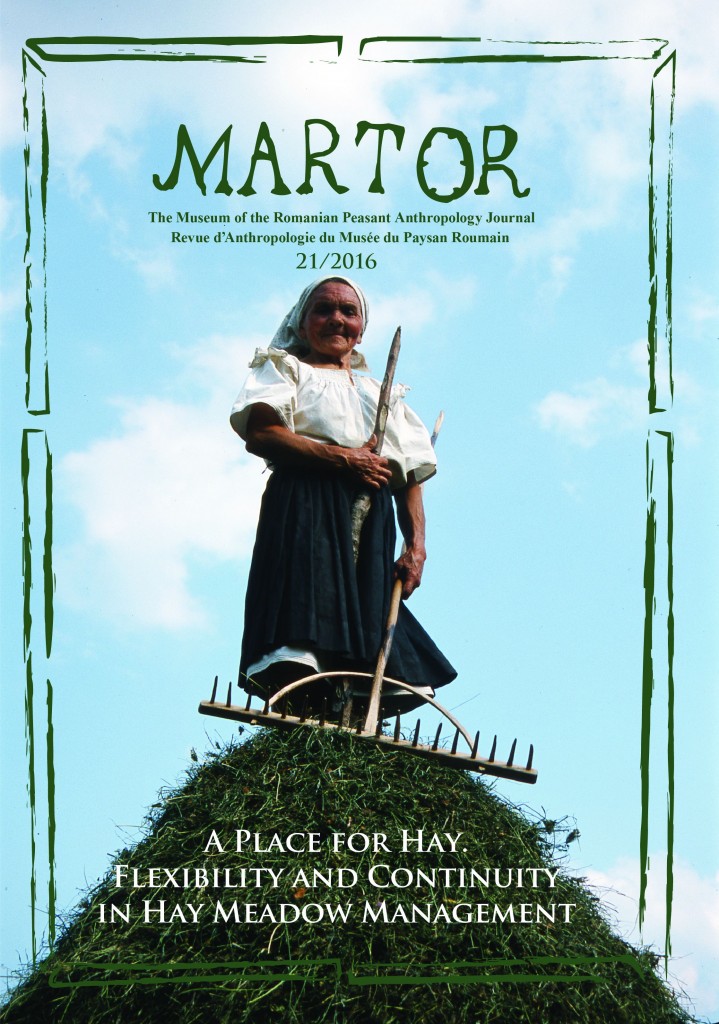Species-rich Mountain Grasslands Through the Eyes of the Farmer: Flora, Species Composition, and Extensive Grassland Management
Species-rich Mountain Grasslands Through the Eyes of the Farmer: Flora, Species Composition, and Extensive Grassland Management
Author(s): Dániel Babai, Zsolt MolnárContributor(s): Zsolt Molnár (Photographer), Dániel Babai (Photographer), Kathleen Laraia Mclaughlin (Photographer)
Subject(s): Anthropology, Geography, Regional studies
Published by: Muzeul Ţăranului Român, Editura Martor
Keywords: mountain hay meadows; grassland management; folk taxa and habitats; Gyimes/ Ghimeș;
Summary/Abstract: Species-rich semi-natural grasslands are important components of European cultural landscapes. In Transylvania, Romania, they are managed by extensive land-use systems which, in turn, are maintained to this day through in-depth traditional ecological knowledge. Interdisciplinary approaches should help to better understand how these land-use systems operate, including their impact on vegetation, as well as help to solve a complex problem encountered in nature conservation, namely how to maintain such systems in the face of social and economic changes that often lead to either abandonment or intensification. The purpose of this paper is to explore the traditional local knowledge related to the flora and vegetation of species-rich hay meadows in the Gyimes/ Ghimeş region of the Eastern Carpathians, Romania. First, 30 farmers were asked about 77 wild plant species of the grasslands, about their habitat preferences, and about the vegetation of the hay meadows and pastures, using structured indoor and field interviews and participatory observation. For a botanical description of grasslands, 30 4×4 m phytosociological releves (quadrats) were made on both hay meadows and pastures. We listed all together 85 wild plant species that were associated with meadows or pastures by the Gyimes people. The majority of constant and sub-constant species found in releves of hay meadows and pastures were well known and often used by locals (wild edible, medicinal, poisonous plants and important forage and fodder plants). Interestingly, however, local people could list only a few of these plant species when they were asked to list species typical of meadows and pastures, i.e. an average 2.0 species names were given in a free listing. We conclude that Gyimes people do not use their detailed knowledge about habitat preferences of wild plant species to create abstract lists of “species composition per habitat”. In-depth knowledge of species and habitat preferences plays an important role in the lives of local communities. Gyimes people’s knowledge extends to almost all key species of the flora of grasslands that provide important ecosystem services. Extensive land-use practices contributed to a great extent to the development and maintenance of European cultural landscapes. A closer look at these systems would provide a framework to harmonise ethnographic and ecological research, as well as assist NGOs and governments in developing more site-specific, culturally more appropriate and thus more effective conservation strategies.
Journal: Martor. Revue d’Anthropologie du Musée du Paysan Roumain
- Issue Year: 2016
- Issue No: 21
- Page Range: 146-170
- Page Count: 25
- Language: English

